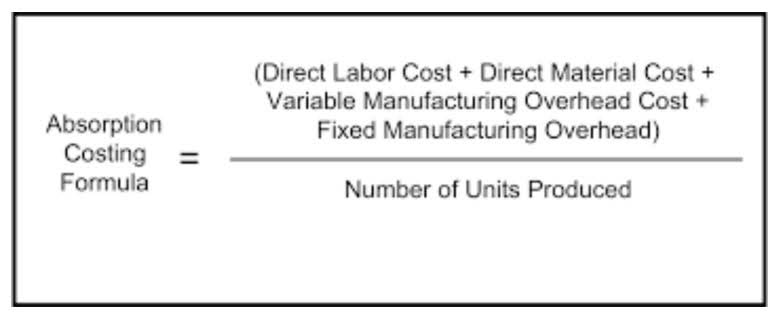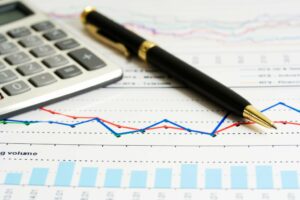
The first step is to find out your business’s average income tax rate, which you’ll plug in for “tax rate” in the formula. You can either ask your accountant for this or use a tax schedule to predict your business tax rate. To do so, divide your total tax liability by your total taxable business income. We now have the necessary inputs to calculate our company’s discount rate, which is equal to the sum of each capital source cost multiplied by the corresponding capital structure weight. The capital asset pricing model (CAPM) is the standard method used to calculate the cost of equity.
- But often, you can realize tax savings if you have deductible interest expenses on your loans.
- If you don’t keep track of your cost of debt, those expenses can get out of control.
- If all else fails, you can always use the 10-year Treasury rates as a proxy for the interest rate for a company’s debt, especially a company relying on short-term debt as its source of financing.
- It involves calculating the proportionate cost of each debt component, weighted by its share of total debt.
- Apple’s WACC can change over time and across different markets, depending on the factors discussed above.
- Since systematic risk does not diminish even if the portfolio is further diversified, as a consequence, investors demand more compensation (i.e. higher potential returns) for assuming the extra risk.
Cost of Capital
Since the interest paid on debt is tax-deductible, the pre-tax cost of debt must be converted into an after-tax rate using the following formula. The formula to calculate the pre-tax cost of debt, or “effective interest rate,” is as follows. The step-by-step process to calculate the weighted average cost of capital (WACC) is as follows. Hence, the cost of capital is also referred to as the “discount rate” or “minimum required rate of return”. Hence no adjustment for corporate tax is required for computing the cost of preference shares. It is to be noted here that there is no such obligation in regard to preference shares as we find in case of debt.

How Do You Calculate the Cost of Debt Formula?
Join 250,000+ small business owners petty cash who built business credit history with Nav Prime — without the big bank barriers. The Excel GROWTH function returns the predicted exponential growth for your data set. Overhead is the cost of staying in business—learn how to track how much you’re really earning and build rock-solid profit projections. Get free guides, articles, tools and calculators to help you navigate the financial side of your business with ease.

How to Determine the Market Value of Debt
Since the interest paid on business debt is tax-deductible, the net cost of debt is often expressed as the after-tax cost of debt. This is calculated by multiplying the pre-tax cost of debt by (1 – tax rate). The cost of debt represents the total amount of interest paid by a company on its outstanding debt. This cost is influenced by the interest rate, which is the percentage of the principal amount that the borrower must pay over a specific period. Interest rates can be fixed (unchanged throughout the loan term) or how to find cost of debt variable (subject to change based on market conditions). These after-tax costs of debt indicate that, after accounting for the tax shield, the company’s effective cost of borrowing is lower than the nominal interest rate it pays on its debt.
- Interest rate is the periodic percentage of the principal (the loan amount) you owe to your debt holders.
- The best business loans are those that offer low rates, but if your personal or business credit scores aren’t high, you may not qualify for those lower interest costs.
- It’s not prudent nor constructive to simply take an average across all estimates, because – again – each mode has its own set of assumptions, and relies on its own set of variables and data.
- Beta is a measure of a stock’s volatility of returns relative to the overall stock market (often proxied by a large stock index like the S&P 500 index).
- The Weighted Average Cost of Capital (WACC) is one of the key inputs in discounted cash flow (DCF) analysis, and is frequently the topic of technical investment banking interviews.
- Hence, the discount rate is often referred to as the opportunity cost of capital, and functions as the hurdle rate to guide decision-making around capital allocation and selecting worthwhile investments.
- Shareholders and business leaders analyze cost of capital regularly to ensure they make smart, timely financial decisions.
- To obtain a more accurate assessment, it is essential to derive the after-tax cost of debt, incorporating the tax shield provided by interest expense deductions.
- Thus, the cost of debt plays an important role in determining a company’s creditworthiness and its ability to manage its capital structure effectively.
- Similar to unlevered free cash flows (FCFs), the WACC represents the cost of capital to all capital providers (e.g. common equity, preferred stock, debt).
- Understanding the cost of debt requires precise calculation methods, each offering unique insights into financial obligations.
Formulaically, the WACC is calculated by multiplying the equity weight by the cost of equity and adding it to the debt weight multiplied by the tax-affected cost of debt. Thereby, an unlevered DCF projects a company’s FCFF, which is discounted by WACC – whereas a levered DCF forecasts a company’s FCFE and uses the cost of equity as the discount rate. Once all the cash flows are discounted to the present date, the sum of all the discounted future cash flows represents the implied intrinsic value of an investment, most often Car Dealership Accounting a public company.

Using a financial calculator or spreadsheet, the YTM can be approximated as 8.72%. This means that the company pays an annual interest rate of 8.72% on its bond. Of that $125 billion, we can determine the percent composition of the company’s capital structure by dividing each capital source’s value by the total capitalization. The equity risk premium (ERP) is the spread between the expected market return and the 4.3% risk-free rate, so the 6.0% risk premium implies the expected market return is approximately 10.3%. The beta of 1.20 signifies the company’s equity securities are 20% riskier than the broader market.

This formula accounts for the tax shield created by interest payments, providing a clearer view of the true cost of borrowing. For companies, the cost of debt represents the cost they can expect to pay in order to raise debt finance. We can broadly think of in terms of its importance to users (companies and investors), and in terms of a signal for the company’s risk. Let’s say you want to take out a loan that will allow you to write off $2,000 in interest for the year.
